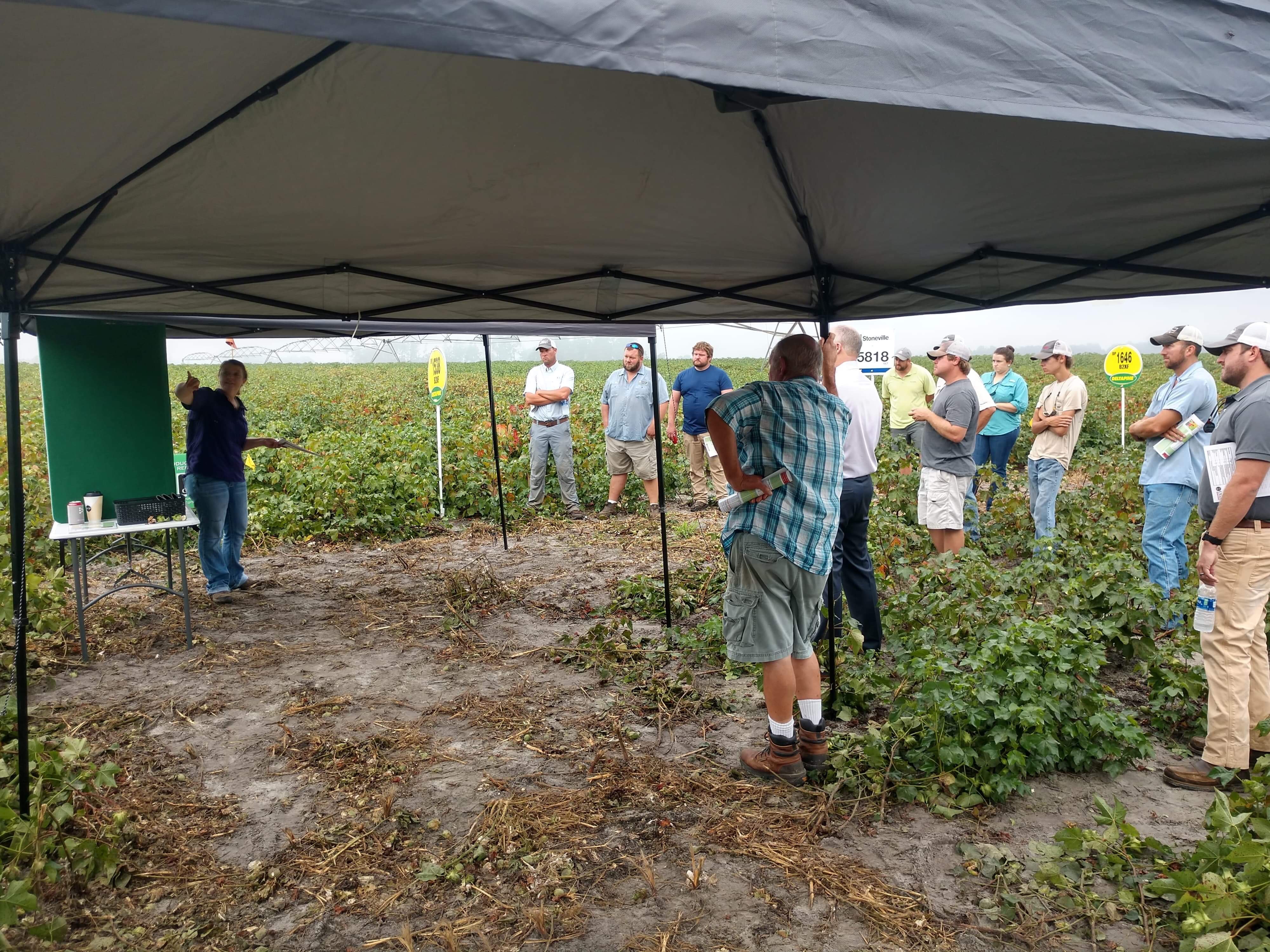- Miller, Jennifer T.
Summary
Through research plots and educational meetings participating growers gain confidence in soil moisture sensors. Farmer adoption of these and other irrigation scheduling methods; increase their water use efficiency and profits.
Situation
Jeff Davis County has over 15,000 acres of cotton annually. About half of those acres are irrigated. The average irrigation cost is $7 per acre inch for electric and $11 for diesel. In the state of Georgia 88% of farmers use visible stress as their trigger for irrigation according to the USDA NASS. By that point the crop has already lost yield. Rising production costs and declining commodity prices mean that our farmers must manage inputs wisely.
Response
To increase adoption of soil moisture sensors and other water use efficiency tools the county agent conducted research plots and educational meetings. Over the past two years, five farmers and one consultant were involved in the AgWET research program. These research plots consisted of placing three water sensors in two cotton fields and scheduling irrigation based off of the readings. Participating growers also watered a comparable field using their normal standards to compare results. Two meetings on “Water Use and Irrigation Efficiency” were held reaching forty-one people. Recently, a tailgate meeting was held in the cotton field to demonstrate the easy install and simple technology interface of the sensors with twenty growers in attendance. The goal of these interactions was to educate growers on the use of advanced irrigation scheduling tools and build confidence in using them in their farming operations.
Impact
The AgWET research project involved five farmers and one consultant representing 15,000 acres. These farmers have gained valuable experience in making irrigation decisions. When asked to name what they learned from using moisture sensors they said: “I learned more about how much of a difference soil type influences water needs from field to field, some don’t lose moisture as fast as you think. I saw that wilting does not always mean the field is dry.” Another stated that; “Seeing the sensors before and after an irrigation reinforced things that I had thought about planning ahead, when watering.” 100% of the participants said that they have changed the way they irrigate cotton as well as other crops by using the data the sensors provide. They also said that using the sensors reduced the number of times they watered and often changed the amount. Eliminating one irrigation event with this group of farmers saved on average 814,620 gallons of water and 270 dollars. It has been great to see these farmers gain confidence in using moisture sensor technology. The group was surprised that they made water management decisions using the sensors, in a year where rainfall was abundant. Knowledge gained by those involved has prompted several to purchase water sensors on their own. Other growers in the county are seeing their progress and are more eager to adopt the technology as well.
State Issue
Sustainability, Conservation, & the Environment
Details
- Year: 2018
- Geographic Scope: Multi-County
- County: Jeff Davis
-
Program Areas:
- Agriculture & Natural Resources
Author
Collaborator(s)
CAES Collaborator(s)
- Porter, Wesley
Extension Impact

